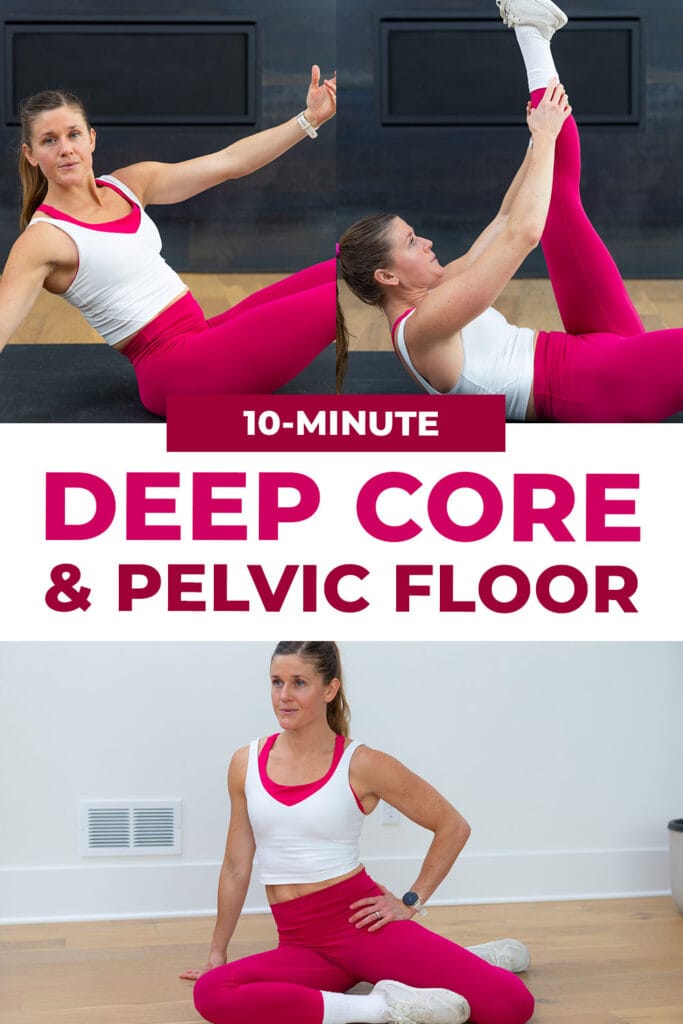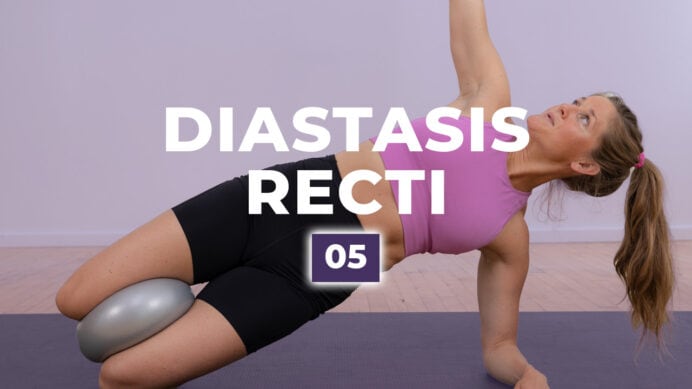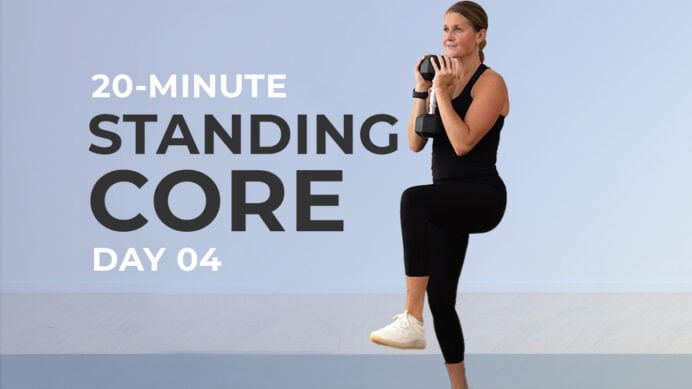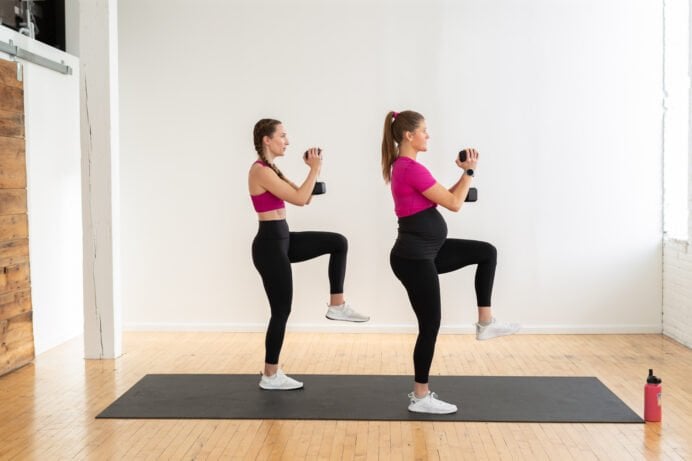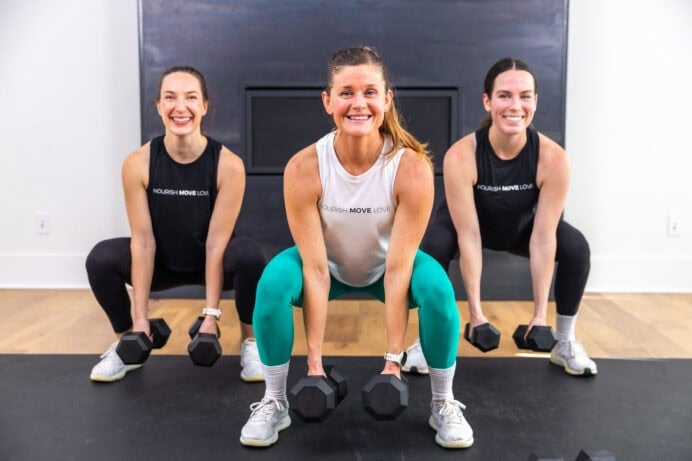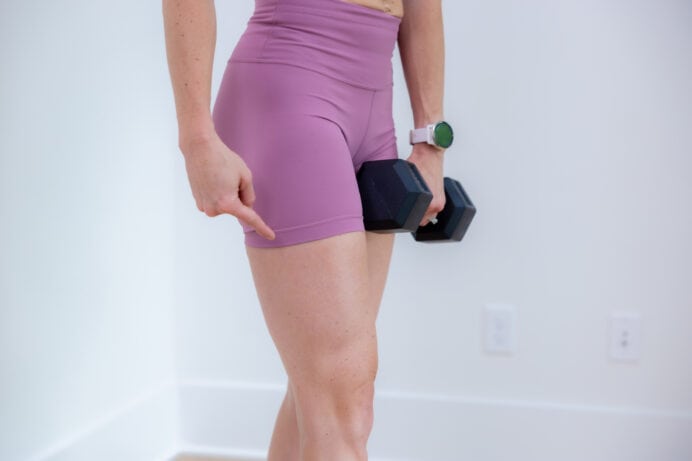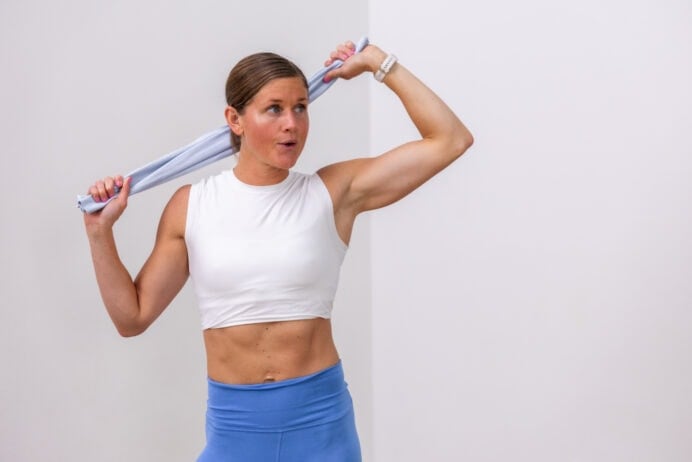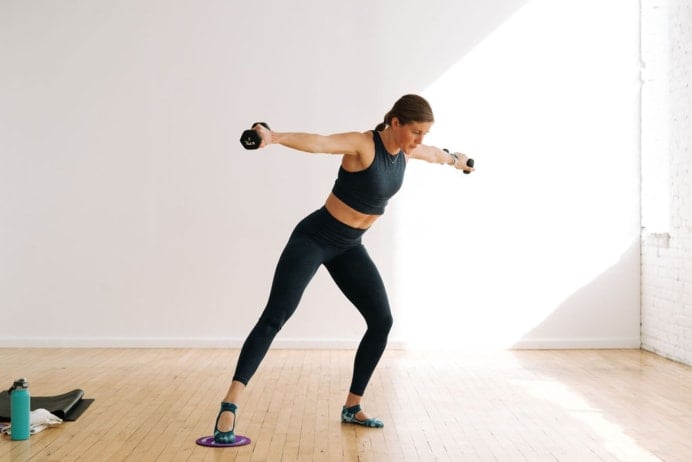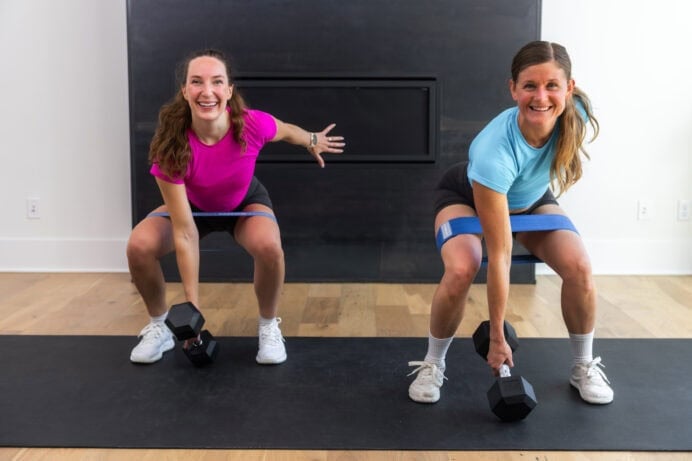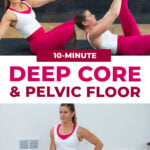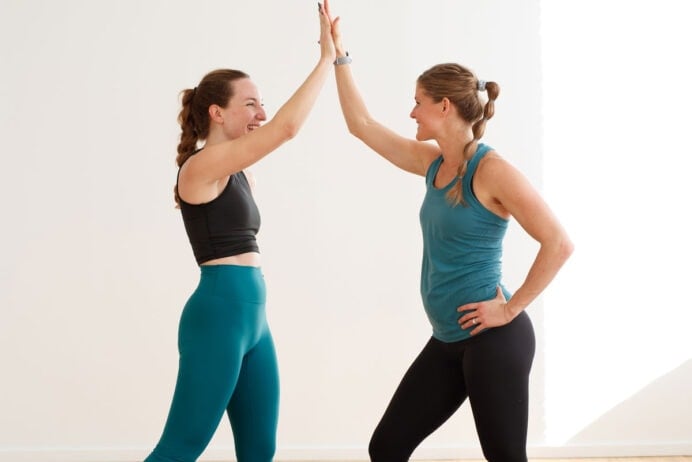
9 Deep Core Exercises
Activate your deep core with these low-impact, intentional exercises designed to improve posture, stabilize your spine and pelvic floor, and build a solid strength foundation for your daily movements. These are 9 of the best deep core exercises you can do at home, whether you’re a beginner or more advanced — no sit-ups or crunches required.
In my twenties, I trained my abs. But in my thirties, I learned how to train my deep core — and it’s made all the difference.
After getting my PROnatal Fitness Prenatal and Postnatal Fitness Specialist certifications and healing my own 4-finger abdominal separation in pelvic floor physical therapy after pregnancy, I’ve become especially passionate about helping women reconnect to their deep core.
Traditional moves like crunches target the outermost abdominal muscles, known as the rectus abdominis (aka the “six-pack”). But if you want a truly functional, strong core, you have to go deeper.
The deep core includes the muscles that stabilize your spine, pelvis, and ribcage. These include:
- Transverse abdominis: the deepest layer of ab muscles, wrapping around your torso like a corset
- Multifidus: small muscles along your spine that provide stability
- Diaphragm: the large, dome-shaped muscle that sits below your lungs and aids in breathing
- Pelvic floor: a group of muscles (pubococcygeus, iliococcygeus, coccygeus, and puborectalis) that support your bladder, uterus and bowels
- Internal Obliques: deeper side core muscles that assist with rotation and core stabilization.
The deep core muscles act like a natural “corset” or stabilizing belt around your spine and pelvis. When these muscles are strong and activated, they help keep your body upright, aligned, and steady during everyday movements as well as big lifts like squats and deadlifts. (PS: squats don’t feel good? Try out these squat and lunge alternatives!)
Working together with the upper abs, lower abs and obliques, your deep core forms the foundation of all movement. When it’s weak or underactive, your hips, back, and legs often compensate, putting extra stress on the body and increasing the risk of lower back pain or knee injuries.
A strong core leads to better posture, improved body awareness, and reduced risk of falls or injury, which is especially important as you age or return to exercise after pregnancy or injury.
Whether you’re looking for safe pregnancy ab modifications, a prenatal core workout, or postpartum healing support, it starts with learning how to activate these deeper muscles.
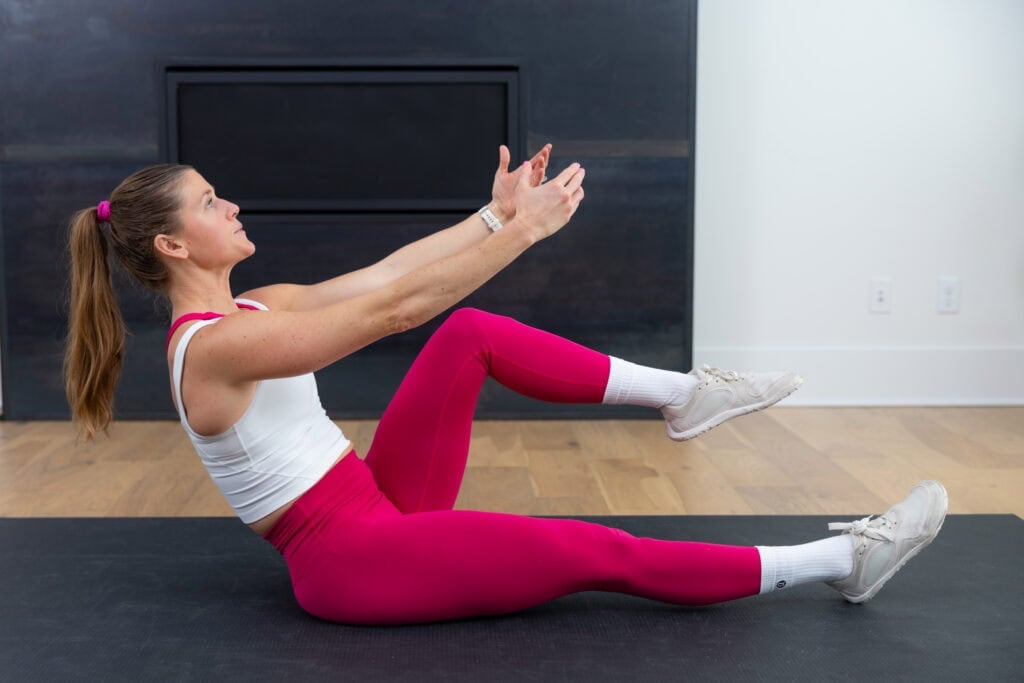
Workout Insights
Improve deep core stability and strength with this guided ab workout.
I recommend adding core workouts like this one to your routine 1-2 times a week to improve strength and definition in the abs and core. For extra emphasis on the core, follow this 28-Day Deep Abs Challenge.
Before starting this core workout, I recommend some breathing exercises to warm up and activate your transverse abdominis muscles. To find your transverse abdominis muscles, fake cough. The muscles you feel ‘pop’ when you cough are your transverse abdominis muscles.
To engage them, imagine there is a string between your hip bones, and as you exhale that string (or your TA muscles) is pulling your hip bones together. Maintain this engagement throughout each deep core exercise.
Workout Equipment
No equipment needed for this bodyweight-only, pilates-inspired core workout.
Workout Instructions
Follow along with the guided Deep Core Workout on YouTube, led by me — your certified personal trainer, Lindsey Bomgren.
Your Workout Looks Like This:
- 9 Deep Core Exercises
- Timed Intervals (40 seconds of work, 20 seconds rest; complete as many reps as you can in the timed interval)
- Perform Each Exercise x1 Set (No Repeat)
Workout Outline
1. Bear Crawl Hover
Targets: Deep transverse abdomen muscles, rectus abdominis (six-pack ab muscles), oblique muscles, shoulders, back, legs, glutes and quads.
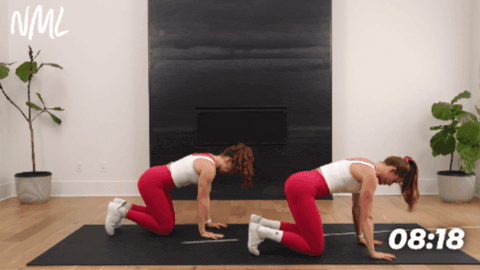
How to Do a Bear Crawl Hover
- Start in a tabletop position, quadruped on all fours, shoulders stacked over wrists and hips stacked over knees.
- Inhale, taking a deep breath as you let your belly slightly drop as you breathe through your midsection.
- Exhale, drawing your abs tight around your torso as you tuck your toes under and lift your knees one inch off the mat, finding a bear crawl. Hold for a three-count.
- Inhale as you lower your knees to the mat, finding a neutral spine and returning to the starting position.
2. Forearm Plank
Targets: Upper abs, lower abs, obliques, shoulders, glutes and thighs.
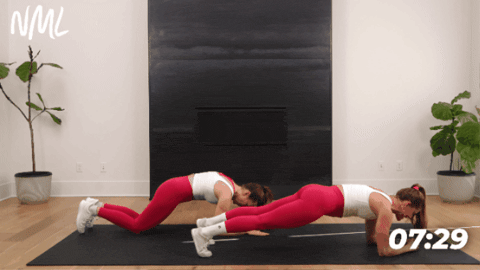
How to Do a Forearm Plank
- Start on all fours, then lower your forearms to the floor. Your elbows should be directly under your shoulders.
- Step your feet back so your body forms a straight line from head to heels.
- Engage your deep core by pulling your belly button in towards your spine. Focus on keeping your hips even, avoiding any piking or sagging.
Modification: Plank variations (like a forearm plank, high plank or side plank) are extremely effective ways to engage the deep core. If being in the plank position hurts your wrists, check out these modifications for wrist pain.
3. C-Curve Knee Drive
Targets: Deep transverse abdominal muscles, lower abs and obliques.
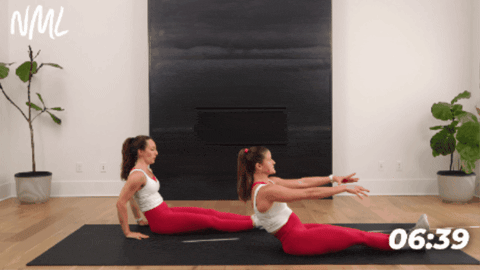
How to Do a C-Curve Knee Drive
- Start seated with your legs out long in front of you.
- Slightly lean back and scoop your belly in as you gently roll your spine into a “C” shape (also called a C-curve), tucking your tailbone under as you round your spine. Extend your arms long in front of you.
- Keeping your core engaged, alternate pulling first your left knee towards your chest, then your right knee into your chest.
4. C-Curve Arm Sweep
Targets: Deep transverse abdominal muscles, upper abs and obliques.
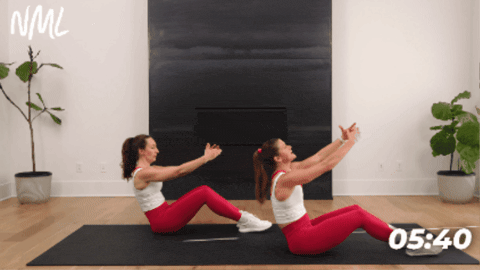
How to Do a C-Curve Arm Sweep
- Start seated with your legs out long in front of you.
- Slightly lean back and scoop your belly in as you gently roll your spine back into a C-curve, tucking your tailbone under as you round your spine. Extend your arms long in front of you.
- Inhale as you open your chest towards the right, sweeping your right arm behind you to tap the mat behind your right hip.
- Exhale to return to center, then repeat on the left.
5. Full Body Roll Up
Targets: Rectus abdominis, transverse abdominal muscles, upper abs and lower abs.
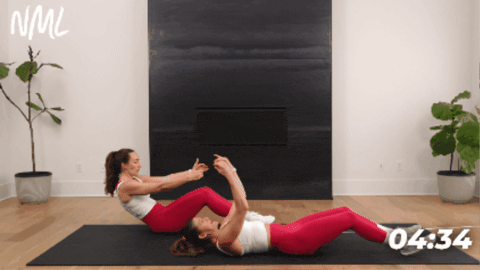
How to Do a Pilates Roll Up
- Start lying on your back with legs extended and arms reaching overhead, palms facing up. Keep ribs gently pressed down.
- Inhale, lift your arms toward the ceiling.
- Exhale, tuck your chin to your chest and begin to roll up one vertebra at a time, reaching your arms forward as you peel your spine off the mat. Keep the movement slow and controlled.
- At the top, sit tall for a moment, then begin to exhale and roll down slowly, scooping your belly and articulating your spine back to the mat, returning to the starting position.
6. Dead Bug
Targets: Deep core muscles (transverse abdominis), lower abdominal muscles, hips, shoulders and back (posterior and anterior deltoids).
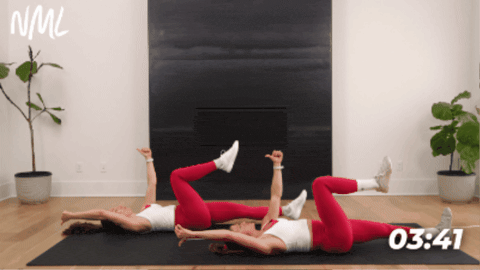
How to Do a Dead Bug
- Lie on your back flat on the floor, performing a slight pelvic tilt to press your lower back into the mat. Lift your knees to form a 90-degree angle (knees stacked on top of hips). Inhale, letting your belly expand.
- Exhale, engaging your core. Extend your left leg and right arm away from your body, lowering the right hand and left foot towards the ground with control. Left arm and right leg remain in place. With control, inhale as you return to center.
- Then repeat on the opposite side. Exhale as you extend your right leg and left arm away from the body, lowering the left hand and right foot towards the ground. With control, return to the starting position.
7. Hollow Rock Hold
Targets: Upper abs, lower abs, obliques, transverse abdominal muscles.
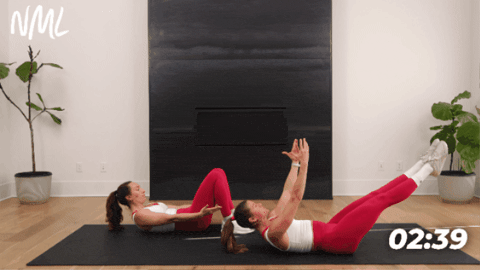
How to Do a Hollow Rock Hold
- Start lying on your back with your legs straight. Lift your arms straight overhead, so your wrists are stacked over your shoulders.
- Activate your transverse abdominal muscles by imagining there is a string connecting your hip bones and attempting to pull them closer together.
- Then, lift your neck and shoulders off the mat before lifting both legs off the mat, attempting to keep your legs as straight as possible.
8. Straight Leg Pull
Targets: Deep core muscles (transverse abdominis), lower abdominal muscles, and hip flexors.
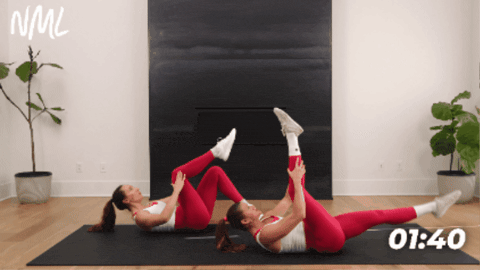
How to Do a Straight Leg Pull
- Lay flat on the floor, legs extended away from your body. Activate your core by pressing your lower back into the mat. Lift your neck and shoulders off the ground.
- Keeping both legs straight, hover your left heel off the ground and pull your right leg in towards your chest, catching it with both hands around your calf. Pulse your leg in for a two-count.
- Then switch, “scissoring” your legs as you pull the left leg in towards your chest and kick the right leg out, hovering the right heel off the ground. Pulse for a two-count.
- Continue this pattern, alternating legs with each rep.
9. Roller Boat
Targets: Upper abs, lower abs, obliques, hip flexors and transverse abdominal muscles.
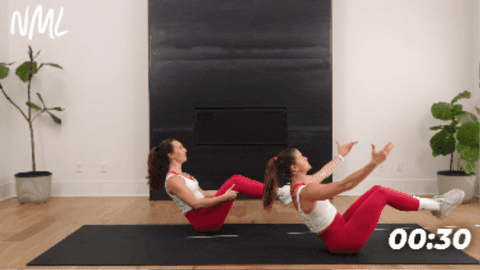
How to Do a Roller Boat
- Sit on the mat, legs bent at 90 degrees and feet flat on the floor. Tilt your hips forward, rounding through the spine as you pull your navel towards your spine (making a ‘C’ shape with your upper body). Keep your shoulders down and the crown of your head towards the ceiling.
- Clasp your hands behind your thighs and roll onto your back.
- Then, use momentum and your core muscles to roll you up to a seated position. Option to lift your hands, extending them away from your body.
- Hold the extended position for a moment. Then place your hands behind your thighs and repeat the roll.
FAQs
Deep core exercises work to create a solid foundation for every movement you make, whether it’s lifting weights, carrying groceries or crushing push-ups. While you might not “feel the burn” like with traditional ab workouts, these exercises target the deep stabilizing muscles beneath the surface which help “pull in” your core, creating a flatter, more toned appearance over time.
Strengthening the deep core and pelvic floor muscles creates a stable foundation for movement, making every other exercise you do more effective and safe. Deep core and pelvic floor exercises support your spine and improve posture, balance and stability. These exercises can also reduce low back pain, improve bladder control, and support functional movement in daily life and workouts.
Rather than choosing one over the other, it’s best to strengthen your entire core, which includes both your abdominal muscles and your lower back. A balanced core training routine supports spinal stability, improves posture, and helps prevent injury. If you only focus on your abs and neglect your lower back, you may create muscular imbalances that lead to discomfort or pain — especially in the lower back. Prioritize functional core exercises that target all 360 degrees of your core (front, sides, and back) for the best results.
More Workouts
Abs + Core WorkoutsPin This Deep Core Workout
